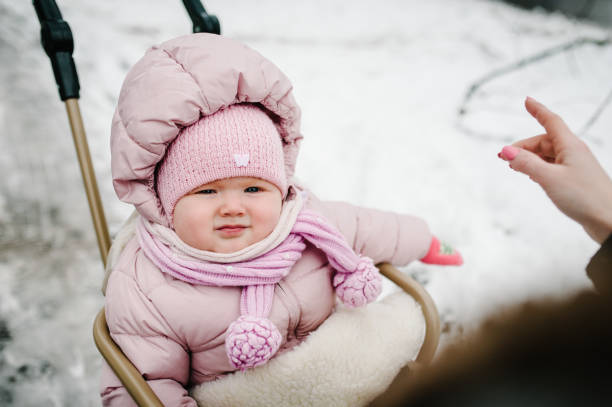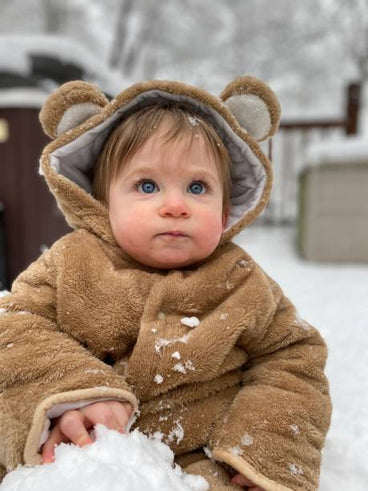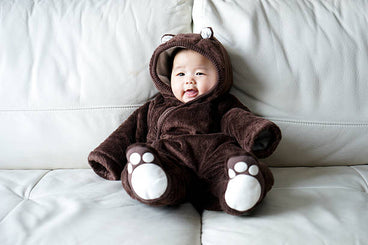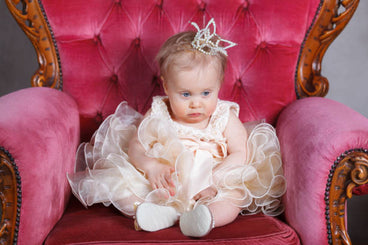Why Jacket Thickness Matters for Babies
Choosing the right jacket thickness is essential to keep your baby warm, safe, and comfortable during winter. Babies lose heat faster than adults, so they need proper insulation that traps warmth without causing overheating. A jacket that’s too thin won’t protect against wind chill, while one that’s too bulky might make it hard for the baby to move or buckle safely into a car seat. The goal is finding the perfect middle ground — cozy but breathable. For balanced-warmth options
Shop medium-thick baby winter jackets here.
What’s the Ideal Jacket Thickness for Cold Weather?
In general, a baby jacket for winter should be **1 to 1.5 inches thick** with high-quality insulation such as down, synthetic fill, or fleece lining. This level of thickness offers adequate warmth for temperatures between 0°C and 10°C (32°F to 50°F). If you live in extremely cold regions, layering a thinner jacket with a warm sweater or thermal base layer is often more effective than a single overly thick coat. For jackets with ideal warmth-to-weight ratio,
explore lightweight insulated baby Jackets here.
Understanding Insulation Types and Warmth Levels
Not all thickness is created equal. A baby jacket with **premium down fill** or **synthetic insulation like Thinsulate™ or PrimaLoft®** provides superior warmth even if the jacket looks thin. Fleece-lined options add extra coziness for moderate winters. When checking warmth, focus on insulation materials instead of just the puffiness — modern jackets can be thin yet extremely warm. For jackets made with advanced insulation
browse high Quality baby jackets here.
Layering vs. Jacket Thickness: What Works Best?
Layering is often more practical than relying on one thick jacket. Start with a soft cotton bodysuit, add a warm sweater or fleece, and finish with a medium-thick jacket. This allows you to adjust your baby’s comfort as temperatures change indoors or outdoors. Over-thick jackets can cause sweating, which cools the baby down later and leads to discomfort. For jackets designed for easy layering
Shop flexible baby outerwear here.
How to Check If Your Baby’s Jacket Is Warm Enough
You can test if your baby’s jacket is warm enough by touching their chest, back, and tummy after 10–15 minutes outdoors. These areas should feel comfortably warm, not cold or damp. If your baby’s hands and nose are chilly but their chest is warm, they’re likely dressed just right. Also, ensure the jacket covers the neck and wrists fully — small gaps can let in cold air. For full-coverage jackets,
Car Seat Safety and Jacket Thickness
One crucial thing many parents overlook is car seat safety. A bulky jacket can compress in a crash, creating dangerous slack in the straps. For car rides, choose a thinner jacket or fleece and then place a blanket over the harness. You can switch to a thicker coat after the trip if needed. Safety experts recommend this layering method for both warmth and protection. For car-seat-friendly jackets
browse safe baby winter jackets here.
Weather-Specific Recommendations
Here’s a quick guide to jacket thickness based on temperature:
- 15°C to 20°C (59°F–68°F): Light fleece or cotton jacket
- 5°C to 10°C (41°F–50°F): Medium-thick padded jacket or fleece lining
- Below 0°C (32°F): Thick insulated or down-filled jacket with hood and mittens
For jackets tailored to each temperature zone
explore baby jackets by climate here.
Fabric and Comfort Considerations
Thickness should never come at the cost of softness. Always pick materials like organic cotton linings, plush fleece, or soft nylon shells that won’t irritate delicate skin. Avoid overly stiff waterproof coatings unless you’re in very wet climates. Look for breathable weaves that let moisture escape, preventing sweat buildup. For soft, comfortable fabrics
Shop gentle baby jackets here.
Final Thoughts: Balance Warmth, Comfort, and Safety
The best baby jacket for cold weather is one that feels snug, breathable, and warm — not overly bulky. Aim for medium thickness with quality insulation and use layering to control temperature changes. Always check safety guidelines for car seats and ensure your baby can move freely. With the right thickness and materials, your little one stays cozy and protected all winter long. For the latest warm-yet-safe designs












